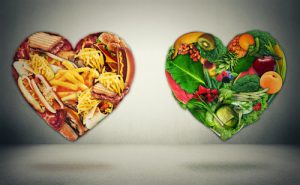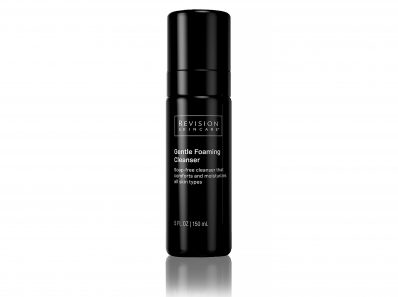 Let’s not beat around the bush – we all desire a specific food from time to time. ‘Food cravings’ are
Let’s not beat around the bush – we all desire a specific food from time to time. ‘Food cravings’ are
intense emotions that are tricky to curb, unless you eat the meal or snack you’re longing for.
Generally speaking, people tend to crave sweet, salty, and not very nutritious options, such as fast
food, processed treats, and sugary drinks. And while it’s important to listen to your body and its
needs, regularly consuming these foods can have a detrimental impact on your well-being and lead to
unwanted consequences such as obesity.
Here, we explore what our cravings truly mean, suggesting healthier options that can satisfy your
urge for something tasty.
The science behind food cravings
It’s worth pinpointing that there is no universal reason for food cravings. There are several aspects
that can trigger an uncontrollable appetite for a certain type of food, and what you crave
varies from one individual to another. For instance, it has been found that males are more likely to
yearn for savoury meals and snacks, whereas females prefer sweet and high-fat treats.
From specific behaviours and habits to brain messages and easy access to food, cravings are the
result of a complex interplay between different factors. In fact, when we consume certain foods,
neurotransmitters inside the ‘reward’ region of our brain – the hypothalamus – become extremely
active. In turn, they translate the intake of these foods into feelings of pleasure and fulfilment, which
is why we’re more prone to seeking these options in the future too.
The more we consume those foods, the more we reinforce the positive memory of a rewarding
experience – and will take the form of a craving when that memory is triggered.
Foods that have this power are usually labelled as ‘hyper palatable’, as they are enjoyable to digest
and eat because of their richness, sweetness, or saltiness.
The physical and mental causes of cravings
As mentioned, there are many causes that can spur your desire for specific foods, and they can be
either physical or mental.
For example, little or low-quality sleep may be a factor that favours food cravings during the day,
because a disrupted night’s rest can impact those hormones in your body that regulate hunger
(ghrelin) and fullness (leptin). Shortened sleep time, in fact, can be linked to an increase in ghrelin
and a drop in leptin, which may stimulate appetite and an urge for high-fat foods.
Richard Holmes at Westfield Health, experts in health cash plans, says that poor-nutrient diets can
make you crave sweet or salty treats too. “A balanced diet can help you tackle unwanted food
cravings,” Richard explains.
“If you cook meals that are rich in proteins and fibre, you’re more likely to feel full, and won’t have
the impelling necessity to snack on non-nutritious foods. Instead, if you follow a diet that lacks these
vital nutrients, you may end up craving treats regardless of whether you have assimilated enough
calories or not.
“However, it’s important to remember that listening to your body is crucial and that if your stomach
is rumbling, it’s probably time to eat. In fact, studies show that skipping meals or restrictive diets can
increase cravings as well.”
Finally, being in a bad mood or feeling stressed can also make you long for less nutritious foods.
Specifically, sentiments of stress can increase your levels of cortisol, a hormone that – as well as
many other things – can intensify your levels of appetite.
Stress also seems to have a direct correlation with snacking on products such as biscuits, chocolate,
and crisps too. Ultimately, cravings often act as a survival mechanism that can help you brighten
your mood on a rainy day, which explains why you consume comfort foods when you’re feeling blue.
How to embrace healthy cravings
Ignoring your body when it’s craving more food is not the right solution. Yes, most people feel
the urge to indulge in salty and sugary treats, which can take its toll on your overall well-being in the
long run. But the good news is that there are plenty of healthy alternatives that can equally satisfy
your desire for snacks.
Here are a few options you may want to take into consideration when you next feel a bit peckish:
Fresh fruit – Fruit is always an excellent option, as it is naturally very sweet and can satiate
any sugar craving you may have. What’s more, fruit has a wide range of health benefits. For
instance, apples can support digestion and your immune system, whereas cherries can help
tackle inflammatory conditions such as arthritis.
Dark chocolate – Chocolate is one of the most obvious and common cravings you can long
for. But why not swap your milk chocolate for a few squares of dark chocolate? In fact, dark
chocolate contains a higher percentage of cocoa, which can reduce your likelihood of
developing heart disease.
Pistachios – Crisps are a frequent go-to option when you’re longing for a tasty, crunchy
snack. Likewise, pistachio nuts are enjoyable treats too, but with a significant difference –
they are way more nutritious. Pistachios are an excellent source of fibre, protein, and
antioxidants, and can benefit your heart, gut, and blood sugar levels.
Popcorn – If you want a healthy alternative that can evoke fun, carefree times, popcorn
could be the ideal option for you. Indeed, corn is a whole grain and is therefore rich in fibre.
Not only that, but it also contains antioxidant properties that can aid your digestive system
and improve your blood circulation.
From sleep deprivation and restrictive diets to stress and low spirits, there are many factors that can
drive our desire for comfort food. Putting your cravings into context can help you understand why
you need those types of food and why you should always listen to your body.
However, by making better choices you can satisfy your appetite while sticking to a healthy,
nutritious diet.
Sources
https://www.ncbi.nlm.nih.gov/pmc/articles/PMC5083777/
https://www.webmd.com/sleep-disorders/features/10-results-sleep-loss
https://www.bbc.co.uk/food/articles/resist_food_cravings
https://pubmed.ncbi.nlm.nih.gov/22306437/
https://www.ncbi.nlm.nih.gov/pmc/articles/PMC3257692/
https://www.healthline.com/nutrition/ways-to-lower-cortisol#TOC_TITLE_HDR_2
https://www.bbcgoodfood.com/howto/guide/top-20-healthiest-fruits
https://www.medicalnewstoday.com/articles/dark-chocolate#heart-disease-risk
https://www.healthline.com/nutrition/9-benefits-of-pistachios
https://www.bbcgoodfood.com/howto/guide/popcorn-healthy



